Imperial Assault: Designer Diary
Fantasy Flight Games geben einen Blick hinter die Kulissen und lassen die Designer zur neuen Erweiterung, Jabba’s Realm, für das Brettspiel Imperial Assault.
“You will take me to Jabba now.”
–Luke Skywalker, Star Wars: Return of the JediThe sands of Tatooine are no place for the unprepared—especially not if you’re anywhere near Jabba’s Palace. Fortunately, you’ve already received your first briefing, in our two previews of the Jabba’s Realm expansion, as we looked at the new heroes that join the Rebel Alliance and the ruthless mercenaries in Jabba’s service.
Today, Todd Michlitsch and Paul Winchester, the designers of the Jabba’s Realm expansion for Imperial Assault, take you inside Jabba’s Palace itself as they share some of their favorite moments from designing this new expansion.
Having the Least Not-Fun
Paul: A major part of our job as designers lies with identifying holes in the game and finding creative solutions to them. One of the best ways to fill gaps is through the new hero and Imperial classes. For example, one of the toughest moments on the hero side of the table is when a hero misses defeating an enemy figure by one damage. It’s almost the equivalent of getting stunned, since you’ll now need to spend another attack to defeat that figure. So, we designed Vinto Hreeda.
With him in the game, the heroes can almost get excited when this situation arises, since Vinto can use his Boltslinger ability or his Off-Hand Blaster and Pinpoint Shot to maximum effect.
Another potential rough spot is having a hero who always gets targeted; with various hero combinations, the Imperial player can often be faced with the reality that the best strategy is to concentrate fire on the same hero in each mission. To target this, we implemented two new sets of components. First was the new hero, Onar Koma,
who can be built like a bodyguard with abilities like Stay Behind Me, using his high health as a resource to deflect wounds from his fellow Rebels.
Additionally, the new Imperial class, Hutt Mercenaries, uses a bounty system that persists from mission to mission, shaking up which hero receives the brunt of the Imperial player’s attacks. With this class in play, the Imperial player can have fun and use his abilities to maximum effect without singling out one player.
Staffing Jabba’s Court
Todd: When creating content for the campaign like the heroes and classes that Paul talks about above, we use a mixture of story, art, and mechanics to create the thematic experience of an immersive Star Wars world. When Paul and I sat down to write our first missions for Jabba’s Realm, we both felt that the Gamorrean Guards anchored the theme of the expansion,
but as they are a melee unit, this often left us wanting for ranged figures to challenge the heroes during Mercenary-themed missions. We turned to the Trandoshan Hunters,
but felt thematically compelled to include them in nearly every mission. The result was missions that played too similarly and focused heavily on straining the heroes.
After a few weeks of tests we decided that Jabba needed an all-purpose Mercenary unit to mirror the Stormtroopers.
Many great Imperial Assault figures have passive abilities that are at their best when the Rebels are bearing down and there’s no time to attack. Royal Guards can defend your other units without activating,
and Hired Guns can attack even if they never activate.
These abilities are great for the Imperial player because they mitigate the risk of not activating, even as the missions force the Imperials to manage their activations. Based on our testing, we hammered out a low-variance, midrange fighter.
With the mechanics decided, we wanted a figure that anchored the expansion to the iconic scenes from Return of the Jedi. The Weequay Pirate was born,
and though it seems strange that such a large project would hinge on a single rank-and-file unit, it became the turning point.
Size (of the Problem) Matters Not
Paul: As I mentioned above, one of the things that I most enjoyed about working on this box was finding solutions to subtle, nagging issues and finding those small windows for fine tuning and improvement. Some of these things seem simple in retrospect, such as expanding the number of Item cards for a fair distribution or setting limits on Agenda cards so the Imperial player doesn’t save all of his Agenda cards until the finale, but they’re very important inclusions that definitely improve the experience.
Other areas of improvement that we identified were in the campaign structure itself. For example, to help reduce potential snowball effects, we altered the way we gave out secondary rewards for story missions. In the past, these were relatively substantial rewards and they were often “stretch goals,” meaning that if you were powerful enough to beat the mission and accomplish your secondary goal, you probably didn’t need those extra rewards. So instead, we aimed for rewarding players who got close but didn’t quite accomplish their mission goal, while making the rewards more modest so it was never more beneficial to lose than to win. Finally, we enjoyed finding ways to improve the narrative of the campaign, incorporating more opportunities for thematic and narrative choices outside of gameplay that impact the campaign, both in mission selection and sometimes even within a mission itself!
Command Cards, Traits, and Army Building
Todd: Of course, Jabba’s Realm isn’t just focused on the campaign; it also has a lot to add to the skirmish game. One of the trickier points of the skirmish game can be getting your Command deck just right. When we test, we often build and play very different armies in the same day. What we found as we did this was that we regularly built the army we wanted to play, grabbed the Command cards, and then needed to go back and change our army to adapt to our Command cards. One common example would be adding more three-cost Troopers to your list to make better use of Reinforcements.
This pressure to conform our army to our Command deck always felt disappointing, and we started looking at ways to diminish it.
We decided on two simple strategies:
- Create powerful Command cards at all costs for all traits.
- Move towards giving Deployment and Command cards multiple traits.
Equal support for traits was always an unstated goal of the game, but with the availability of Command cards directly impacting army building, we wanted to commit to fleshing out the traits quickly, rather than slowly over time. Jabba’s Realm focuses on the galaxy’s Mercenaries, so Hunters and Smugglers each gain plenty of go-to Command cards, including three-point capstone cards such as Assassinate from the Jabba the Hutt Villain Pack.
Giving Deployment cards more traits also opens up your options for Command decks.
Because the traits were causing us to change the armies we wanted to play, we decided to approach traits more flexibly in the future. Deployment cards with multiple traits make it easier to justify playing single-trait Command cards. For example, Weequay Pirates can share cards with both Boba Fett and Hired Guns. Likewise, multi-traited Command cards support diverse armies, even if the figures are very different. Boba Fett and Hired Guns can both use Tools for the Job, even if your Weequay Pirates have been defeated! While subtle, this slight flexibility makes more cards playable in more situations, resulting in more reliable Command decks and empowering players to use the figures they want, not the figures they need, in order to be competitive. We’ve certainly noticed the difference, and Jabba’s Realm really bloomed into the expansion that Paul and I are so proud to present!
Thanks, Paul and Todd!
You can pre-order your copy of Jabba’s Realm at your local retailer today.
Der deutschen Vertrieb der Fantasy Flight Produkte liegt bei Heidelberger.
Link: Fantasy Flight Games


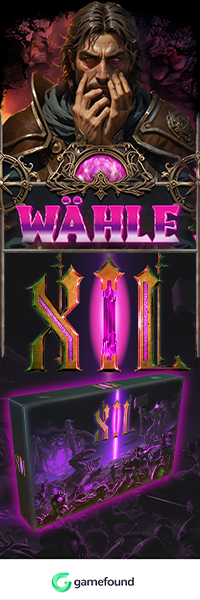
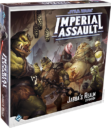
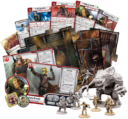
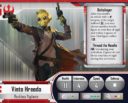


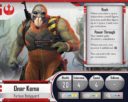













Ich finde Imperial Assult echt Klasse… Hab mir immer ein Star Wars Tabletop Spiel gewünscht, da ist dies ein guter Kompromiss. Ich freue mich auf die Erweiterung(en).